Chapter 5
Multiplatform Interoperability: Working with 2D and 3D Data
This chapter introduces you to the best-practice techniques used in importing data into your Autodesk® Revit® MEP 2013 database, either directly into the project file or via a loadable family. The chapter also covers which data to use and when in the project life cycle to use it. It is easy to select a button that performs the import, but, more importantly, why are you doing it? And for that matter, should you actually be doing it?
Revit works very well with file types other than native RVT project files. Many of the issues you will encounter are due to the differences between existing CAD technologies, which for the most part rely on elements—lines, arcs, and circles, while the newer BIM technologies are founded on object-based parametric databases. These two types of databases are very different, so when you have to start working with other consultants who use other data types, you may experience issues such as the following:
Loss of Performance
Typically, importing any other file format into Revit is a bad idea. Yes, you can do it—but like eating too much candy, your file size will start to bloat and slow you down. Keep your project file lean, and minimize its intake of sweets whenever you can!
Difficulties Displaying and Printing Data Exactly the Same
One of the most annoying problems is issues with fonts either not being installed or, in the case of legacy DWG data, not being fully supported and therefore never displaying in the same way as the original.
Data Loss
Many issues can cause data loss in your final documentation. These can range from linked files being unloaded, to workset visibility being incorrectly set, to printer driver problems.
The other question we must ask is: Is 2D really 2D? An Autodesk® AutoCAD® 2D DWG file can show up in a 3D view. Do you want it to?
In this chapter, you will learn to do the following:
- Decide which type of data you want to use on a project
- Link data consistently and in the correct location
- Prepare data prior to import
2D Data Types
The AutoCAD file format has differences even among drawings that are created in the same AutoCAD version. For example, virgin AutoCAD can sometimes produce an error when opening a DWG file that was created in any of the vertical products (AutoCAD® Civil 3D®, AutoCAD® Architecture, AutoCAD® MEP, and so on). When you import this file into Revit, the error shown in Figure 5.1 is displayed.
Figure 5.1 Elements Lost On Import warning
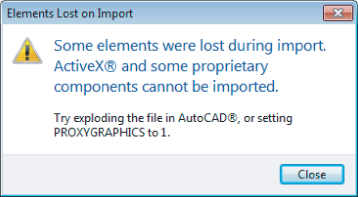
An additional message is the one displayed in Figure 5.2. Although not exactly an error message, it should make the user take notice—were you actually expecting objects to be in AutoCAD model space? If so, then there may be some fidelity issues with the drawing file that you are trying to link.
Figure 5.2 No valid elements
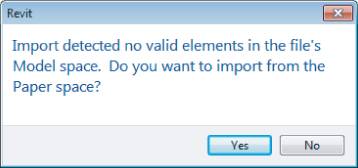
The issue we face here is whether the “intelligent” data in the AutoCAD file is important or, for the sake of the Revit project, can we explode (if possible) the objects to base elements that can be read in Revit?
You have other options if the data has been created in one of the vertical products. You'll learn about these options in the “3D Data Types” section later in this chapter.
MicroStation 2D DGN
Although Revit currently supports AutoCAD versions 2000 through 2010, only files from MicroStation versions 7 and 8 can be imported. The possible alternatives here include asking the originator either to use Save As to create an AutoCAD file format that MicroStation can handle, or to export as a DXF file.
DXF
The Drawing Exchange (DXF) file format has been around for almost as long as DWG and DGN. It is a well-recognized and trusted translation medium between primarily 2D formats. DXF file format also supports conversions to file formats 2000–2010.
2D Data for Standard Details
When importing 2D data for standard details, you may well be linking existing details from your company library. If you have used the same drafting standards in AutoCAD and Revit, this process is extremely easy. However, you might want to take a look at your existing company standards if you are planning on running two systems.
The main decision point relates to the use of the legacy default AutoCAD SHX fonts, such as romans.shx or icocp.shx. The great thing about these fonts for AutoCAD users is that you can control the line weight of the text by utilizing different colors. However, although Revit recognizes these fonts, you cannot adequately control the line weight of text objects in Revit. In fact, the only way to edit the weight of the text is to make it bold. Again, this process involves editing the AutoCAD drawing. For example, Revit does not recognize all the codes CAD users have used for years, such as the degrees symbol (%%d), underline (%%u), and so on.
Thus, in order to use Revit and AutoCAD and have your output identical, you will need to change your AutoCAD fonts to TrueType fonts. This has been a hot topic for many people implementing Revit. Once you actually get past the shock that this is required and that drafting standards need to change, the actual conversion process can be automated in AutoCAD.
When you import a file into Revit, you must ask yourself the following questions:
- Will this be used in more than one view?
- Is the file likely to be updated in other places (perhaps referenced by different projects, Revit and otherwise)?
- Can the drawing be exploded after it is imported? Note the term imported. If a drawing is linked, it cannot be exploded. Neither can it be bound like an X-ref or a linked Revit file.
Also worth noting is that when exploding an imported object, there are two options: Partial and Full. A Partial explode will turn the result into lines and blocks, while a Full explode will reduce the imported drawing into only lines, arcs, circles, and text. Text becomes single lines of text rather than retaining any multiline settings, regardless of a Partial or Full explode.
When importing or linking into a plan, section, or elevation view, the drawing will show up in multiple views unless you select the Current View Only check box in the import dialog box. See Figure 5.3.
Figure 5.3 Current view only
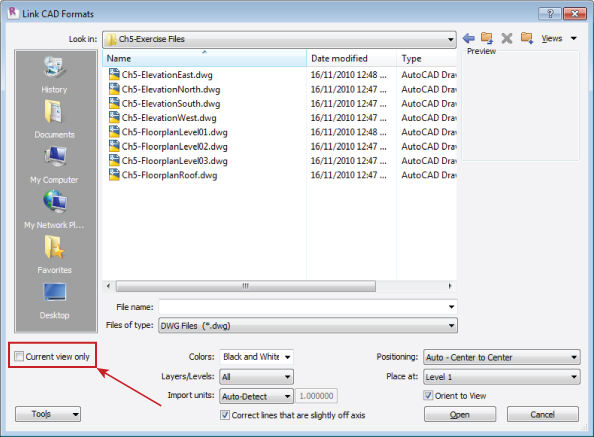
![]() If the view you are using is either a drafting or a legend view, the Current View Only check box is grayed out, because these views are only 2D.
If the view you are using is either a drafting or a legend view, the Current View Only check box is grayed out, because these views are only 2D.
When importing a file for use as a detail, positioning generally is not as important as when importing an overall plan. The Positioning options for importing are shown in Figure 5.4.
Figure 5.4 Positioning options

For details, you can generally use the manual options and place the details where required. Trying these options in a blank project file before you bring any file into your live project is always a good rule of thumb; it gives you a sense of where the objects are going to be and whether the scale is correct. Figure 5.5 indicates the options available for import units. Although Auto-Detect is the default option and usually works, sometimes the originator of your imported data is not as rigorous as they should be and their units don't quite match their documentation. So actually specifying the units is preferable to letting Revit apply a default.
Finally, and new to Revit MEP 2013, is the option to correct lines that are slightly off axis, as shown in Figure 5.6.
Figure 5.5 Import Units options
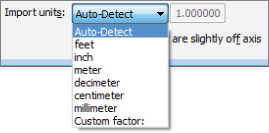
Figure 5.6 Correct lines that are slightly off axis
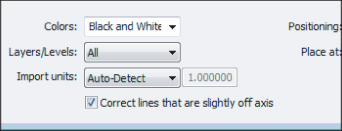
This new feature should be used with care, however, because those “slightly off axis lines” may be by design!
2D Data for Plans Sections and Elevations
Let's say that you are using Autodesk Revit MEP and want your staff members to keep using that program, even though you have other projects in your office for which the architect is using traditional drafting methods. Should you do these projects in AutoCAD or Revit? Once you have been using Revit for a while, using anything else feels like it takes far too long, and there's all that checking!
The following Revit workflow has been tried and rigorously tested. It means that your staff members retain their knowledge, and the project design is still coordinated (albeit only with the other building services, not with the architecture—although the architect can provide you with sections as well as plans).
There are two considerations when going down this route, and these depend on how your project team generally works, whether this is in one multiservice file or multiple project files with only one service. If all services are in the one model, linking the plans and sections into that file is probably the best way forward.
My experience is one of working with multiple project files—Architecture, Structure, Electrical, HVAC, Fire, Plumbing, and Drainage. This is born of necessity, because the project teams are located in different geographic locations. Although the company does have technology to support distributed file servers and project teams on different continents in this instance, the reality is that managing this process can be more trouble than it is worth.
In this latter workflow, linking the 2D files into each project file is an option. These linked files appear only as linked overlays in the same way as they do in AutoCAD. Managing the location of multiple linked files in multiple project files is a messy and time-consuming task. You have to rely on users not moving or deleting anything accidentally. Of course, this applies in any project, but the problem can become compounded under these circumstances. The best option here is to have one architectural file, one place to update and manage, and all your services files can be kept at the same stage for printing. This does require some setup at the start of the project but, once complete, it is almost as manageable as linking a Revit Architecture model.
The following exercise will take you through linking plans and elevations into a new project file, creating levels and default views that any of the project engineers can then use to obtain the prints they require for markup. Although this exercise uses a few of the more basic Revit commands, it is mainly designed to show a best-practice workflow, especially when linking this file into your services project files.
- Current View Only check box: Deselected
- Colors: Black And White
- Layers/Levels: All
- Import Units: Auto-Detect
- Correct Lines That Are Slightly Off Axis: uncheck
- Positioning: Auto - Origin To Origin
- Place At: Level 1
- Orient To View check box: Selected
Figure 5.7 Import settings
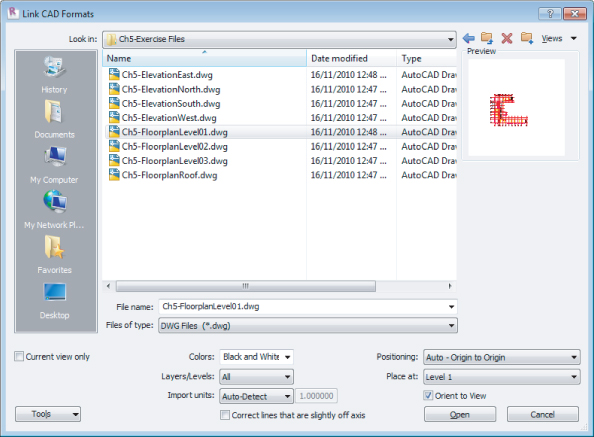
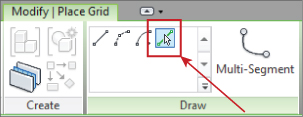

Figure 5.8 Setting the work plane
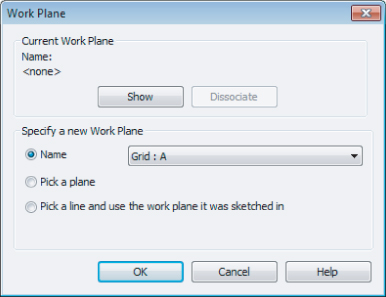

Figure 5.9 Wireframe architecture
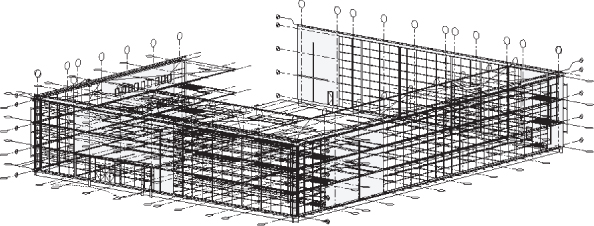
Figure 5.10 View Templates

Figure 5.11 Visibility/Graphic Overrides, Level 1
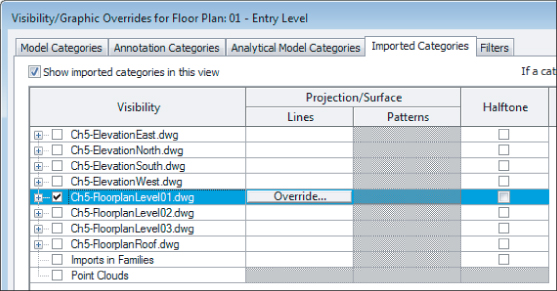
Figure 5.12 V/G Overrides, South elevation layers
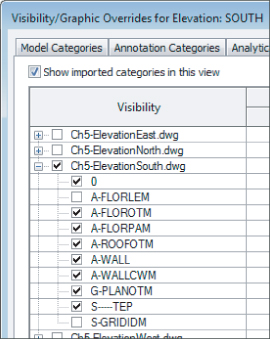
Figure 5.13 View deletions
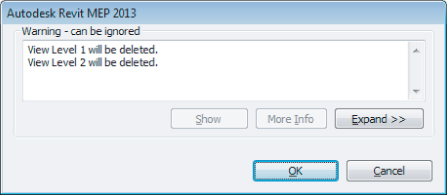
Figure 5.14 Visibility/Graphic Overrides
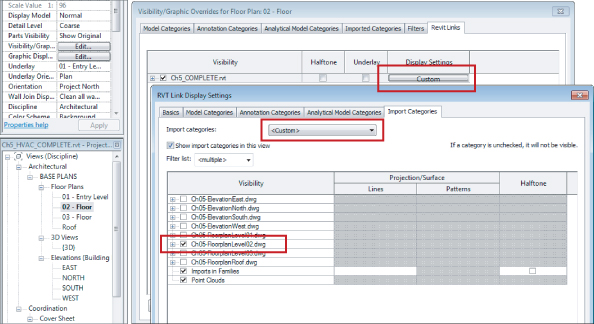
Whether you're linking or importing CAD data from other formats, although you can use the overrides to change what you see or how you see it, you can, in fact, use the Import Line Weights option as shown in Figure 5.15. This enables you to specify a DWG color number and associate it with a pen weight in Revit. This can range from a series of default standards supplied with the software to loading your own (or partner's) standard, so the weights of lines are the same between CAD and Revit.
Figure 5.15 Import Line Weights
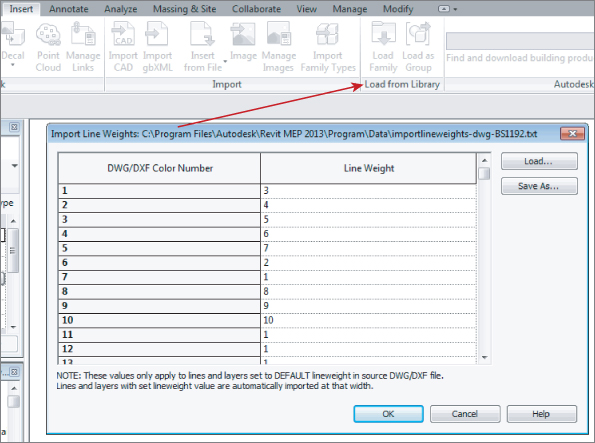
In addition, you have the ability to select and query the layers in a linked/imported CAD file. Say, for example, you are unsure of the layering standard in the linked file; you can select that file and then use the Query command as indicated in figure 5.16. You can select lines and objects within the link file and choose the option to hide that selection in your current view.
Figure 5.16 Query imported layers
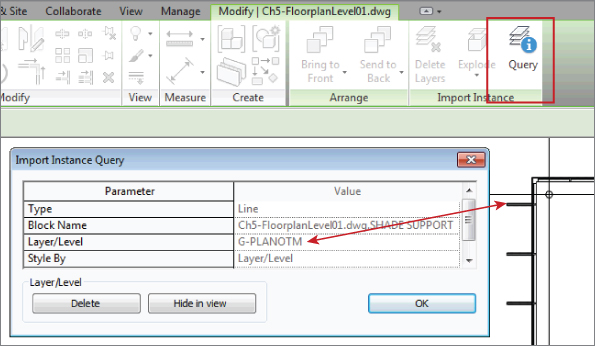
3D Data Types
This section is easy—well, it should be anyway. You are, after all, importing and manipulating 3D data in a 3D application. What could possibly go wrong?
It all depends on the type of data you want to import or link into your project. Let's start with the easiest—a Revit project file. Surely, there cannot be anything difficult with that? What it boils down to, however, is the other users and how they have set up their projects. If you are lucky, they have a lot of experience and have communicated how the model is constructed to the entire project team.
Much also depends on what you, as an MEP user, want to get out of the project, so let's see.
Revit Project File
Working with external consultants can be very trying at the best of times. Think back to times when all you had to worry about was whether lines had been drawn on the correct layer and whether they were either by layer or by block. Yearning for the old days? Life did seem simpler then, but was it really?
Getting a set of drawings from the architect meant doing some preparation work such as running the odd AutoLISP routine to change layers, line types, and color. Then you had to make sure the plans all had the same User Coordinate System (UCS) and elevations, and that sections matched floor and ceiling plans. Now I remember the pain!
However, now that we have swapped one system for another, there are a whole host of new problems. Worksets, especially ones that were off by default, did cause lots of problems. Since Revit MEP 2011's release, however, you can alter the status of worksets, and that particular issue has largely disappeared. Now, with Revit MEP 2013, you can actually disable worksets when collaborating with others. When you open a workset-enabled file and click Detach From Central, the dialog box gives you the options shown in Figure 5.17.
Figure 5.17 Detach Model From Central dialog box
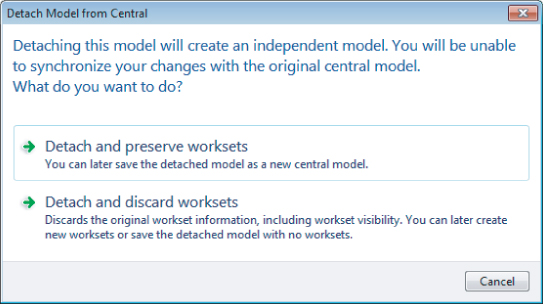
Issues that surround this subject include the loss of workset visibility. Unfortunately, some users utilize worksharing as a type of extended layer or visibility control. The trouble with this workflow is that the problem is exacerbated by the introduction of workset visibility control in view templates. Now there are six ways of turning off an object in a view in your project file:
- Visibility/Graphic Overrides
- Filters
- Design Options
- Phasing
- Worksets
- Hide Element
You can also control any linked file either in conjunction with your view settings or separately.
Project Phasing and Design Options
If an architect has an existing building and is developing new and future designs, that architect may have these phases set up in the project file. You'll definitely need instruction from the architect on the particular phase of the project on which you are working, and what Phase filters were applied. Once you have a list of the phases in the architect's project and understand which ones apply to your contract, you can set up phase mapping.
Say the architect has phases for Existing, New Build, and Interior. For your project, there are phases First Fix and Second Fix. Select the linked Revit file and, from the Properties dialog box, select Edit Type. Then, in the Type Properties dialog box, select Phase Mapping, as shown in Figure 5.18.
Figure 5.18 Linked file type properties

This is where you decide which phase in the architect's file corresponds to a phase in your project, as shown in Figure 5.19.
Figure 5.19 Phase mapping

Once this mapping is finalized, any views set up in your project specifically for First Fix or Second Fix will also display the architectural model correctly. (Notice the term model. This has no effect on any linked DWG files, since phasing applies only to model objects.)
Hopefully, by the time it comes to the MEP design, most major issues, such as whether the building is square or rectangular, will have been sorted out. However, if the architect is still in discussion with the client, you will need to be prepared to discuss the primary design option with the architect and, if are you being paid to, design for that option plus the other options that the architect thinks the client may like.
But I've jumped ahead here! What about the MEP concept and preliminary designs? How do we as modelers and designers fit in with what the architect is designing? What are our responsibilities, and how much are we modeling and designing in Revit?
If we are relying on the architect to provide a model at the concept stage so that we can run analysis calculations for building heating and cooling loads, we really need an airtight model. Chapter 17, “Solid Modeling,” covers the merits of using the Mass Modeling tools in Revit to generate a building form.
You should also discuss with your team how agreeing to certain methods for creating objects within your projects benefits the entire team. Stress that in-place objects cannot be scheduled and have a huge detrimental effect on the performance of the project file.
Revit Family File
Revit families are the objects that bring any design to life. They hold data that, when created correctly, provides more than just a visible indication of the placing of an object. Thus, team members should reach a consensus that Revit families are implemented to a certain standard:
- They are not created in place.
- Categories are set correctly.
- Subcategories are adequately and consistently named.
Within your company, you should have a standard for family creation. This standard could specify any of the techniques and best practices used in creating families that can be placed into your library.
Your standard should include items such as the following:
Common Orientation and Insertion Points
If a family is exchanged with another, you really don't want it to jump 2 feet to the left and rotate 22.5 degrees.
Naming Conventions for Subcategories and Reference Planes
This helps make the families perform as required in relation to visibility settings when loaded into the project. These conventions also aid users when familiarizing themselves with how best to create a family according to company standards.
A Standard, Companywide Shared Parameter File
This ensures that families, even from different categories, can share the same type of data that can be reported, tagged, and scheduled in the project file.
ADSK
The ADSK file format promises to be one that will cover multiple platforms. In its current format, which is XML based, ADSK allows the user to export from, say, the Autodesk® Inventor® platform to an ASDK file, which can then be imported into Revit. There is functionality in Revit Architecture to export ADSK files for use with civil engineers, although this is not supported in MEP. This is a static form, but it does have the benefit that, if connectors have been placed in Inventor, their properties are taken through as Revit MEP connectors. You can open ADSK files from the Open command, and, after you save them, they become loadable Revit families.
IFC
The Industry Foundation Classes (IFC) file format was introduced as a solution to the problems of multiple software vendors competing in the 3D space. The IFC file format is an XML file that can be edited in text editors such as Windows Notepad.
Using IFC can increase the number of consultants with whom you can interact. There is a potential downside, however. Unless you spend adequate time at the front end of the project discussing just how the data (format) is to be transferred with all parties, problems can arise from data that, when opened, is so inefficient as to be almost worthless. In some cases, it is preferable to use the import method as described in the previous exercise than it is to import an IFC file. On an average-size project, an IFC file can take literally hours to import, and then the objects that are imported might turn out to be in-place families.
The preceding case study highlights some of the issues that users face when using the IFC format. At the time of this writing, there are numerous companies producing free as well as fee-based IFC viewers, which allow the user to view the building model and any properties that are attached to the building elements. Some of these software vendors also provide IFC cleaners that allow for the optimization of an IFC file prior to opening it in any other suitable software.
AutoCAD DWG
As described earlier in this chapter, native AutoCAD and MicroStation files are easily imported or linked into Revit. The purpose of doing so in the 2D environment is that it can be a good way of bringing together a project team with a wide range of skills.
The reasons for importing native 3D objects from AutoCAD can be a bit blurred. If you were modeling 3D building objects in AutoCAD, why wouldn't you do the same in Revit? It could be argued that a company has a wide range of 3D library components that do not need to be parametric, so what would the harm be in importing those objects into a family template of the correct category, that is then saved as a loadable Revit family? There are mixed opinions about this, especially when companies have to invest substantially in extra development work. With the bottom line speaking louder than it has for many years, a lot of companies are preserving or reusing as much as they can, in the hope that doing so will save them money. At the end of the day, it comes down to economics, but (and point this out to your employer) invest wisely and spend the necessary time on developing or purchasing your Revit library.
DWGs from Verticals
AutoCAD verticals, such as Architecture, MEP, Civil 3D, and Bentley Architecture are all object based, relying on additional object enablers to create more functionality. This leads to proxy objects, discussed earlier in this chapter.
The way AutoCAD or MicroStation handles this intelligent information is to give the user the ability to export to IFC. Exporting DWG/i.dgn elements to IFC does work. Sometimes you even get real building elements when this data is opened in Revit. However, it isn't perfect, and many times although the data is all there, it ends up as in-place elements, which are inefficient. Thus, it's “Start again, and do not pass Go!”
SketchUp
There! I said it!
Yes, you can.
Why?
OK. OK! Say that someone has modeled the entire city block and surrounding suburbs in Google SketchUp (which at time of writing has just been acquired by Trimble), and you can import that model, enabling you to perform Sun studies. Later in the book, you'll see how to do exactly the same thing in Revit and have something useful in your project file. The major downside of importing this type of 3D data into your Revit project is its lack of “intelligence”; that is, it cannot hold parameters, allowing you to quantify objects or manipulate it in any way other than to turn off layer information.
Point Clouds
The latest addition to the Import range of data is point clouds. Revit supports a variety of formats (FLS, FWS, LAS, PTG, PTS, PTX, XYB, and XYZ), but these must be processed on insertion into Revit. You can do this by selecting Raw Formats from the Files Of Type drop-down list, as shown in Figure 5.20.
Figure 5.20 Selecting Raw Formats from the Link Point Cloud
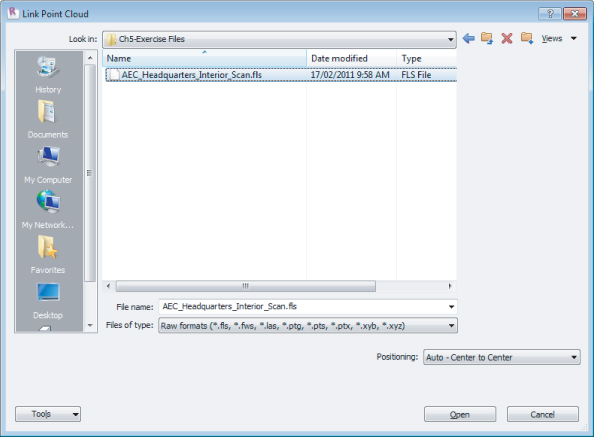
These raw files need to be indexed, as shown in the message box in Figure 5.21. This process creates the native (PCG) files. Be prepared to wait, however, because the conversion may take a while.
Figure 5.21 File Not Indexed
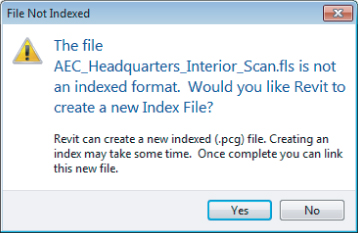
Once the PCG file is created, it can then be linked into your Revit project in the same way as any other linked file. This type of new format is a great way to start an as-built project. This type of data is going to take up resources, however, with files starting at around 200 MB. Nonetheless, the indexed file performs well after it is linked. With the point cloud data linked, you can view it in the same way as any other linked file. In Figure 5.22, you can see this cropped 3D view, which displays above-ceiling pipework.
Figure 5.22 Cropped 3D view

The Bottom Line
Decide which type of data you want to use on a project.
Revit MEP 2013 allows the user to import and reuse existing drawings from AutoCAD and other formats.
Master It
Having a good command of the tools available for importing other file formats will extend and enhance the integration of Revit with other CAD systems. When importing a 2D format file into Revit, what are the two best ways of ensuring that the data is shown in only one view?
Link data consistently and in the correct location.
When bringing data into Revit, it is important to be able to define where the object is positioned.
Master It
An imported drawing has inaccurately placed or frozen layer objects that make the extents of that file greater than 2 miles. What should you do prior to the import?
Prepare data prior to import.
Revit project files should be the easiest to link to your project. However, at times this process can become complicated.
Master It
After receiving a Revit Architecture model, you can see that some worksets are causing visibility issues when the file is linked to the Revit MEP model. How can this be solved?
